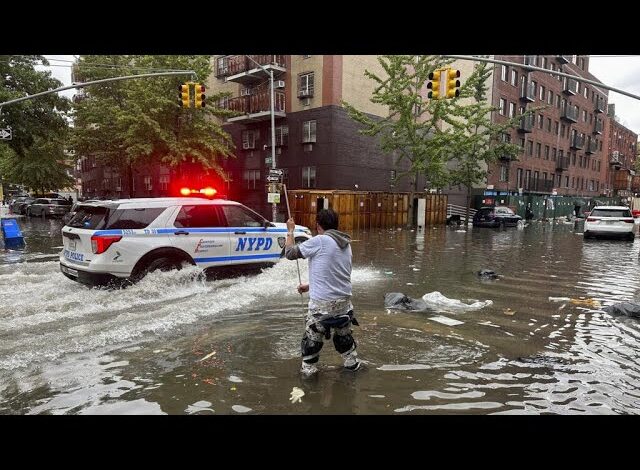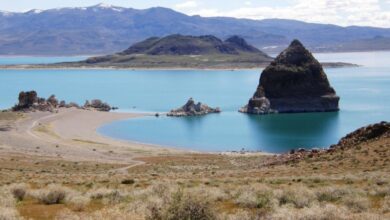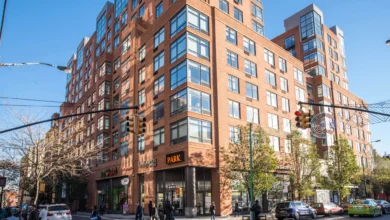New York Flooding: Latest Updates on Storms, Damage, and Emergency Response

New york flooding has turned into one of the most pressing climate challenges for the city that never sleeps. With storms growing fiercer and waters rising higher, both residents and authorities are on constant alert. Each season now brings an increased risk of heavy rainfall, coastal surges, and flash floods that can change the landscape of the city within hours.
New York’s vulnerability is not just a local issue. Around the world, places like Dubai, Venice, and even the Sahara Desert have experienced unusual flooding events, proving that no place is truly safe. Understanding the causes, history, and solutions to new york flooding is more important than ever before to secure a safer future for the city.
Understanding the Causes and Risk Factors of New York Flooding
The reasons behind new york flooding are complex and deeply interconnected. Climate change plays a major role, increasing the intensity and frequency of storms. Rising sea levels caused by melting glaciers also contribute, making coastal areas around New York even more prone to flooding during storm surges and high tides.
Urbanisation adds another layer of risk. With so much of the city covered in concrete, water has nowhere to naturally drain, leading to rapid surface runoff. This is similar to the flooding seen in Vermont and North Carolina, where paved landscapes have made communities more vulnerable. New York’s growing skyline may be a symbol of power, but it also creates a dangerous environment during heavy rainfalls.
Major Flooding Events that Shaped New York’s Response
New york flooding history is marked by several devastating events. Hurricane Sandy in 2012 was a wake-up call that showed how unprepared even a global metropolis could be. Massive storm surges submerged parts of Manhattan, shut down the subway system, and left thousands without power for days. The economic and emotional toll was immense.
More recently, the floods of September 2023 were another stark reminder. In just a few hours, streets became rivers, subways turned into waterfalls, and emergency services were stretched to their limits. These events echo flooding tragedies in Asheville NC and Fort Lauderdale, highlighting how fast and unforgiving urban flooding can be. Each disaster reshapes policies and planning efforts in the city.
Areas Most Affected by Flooding in New York

New york flooding does not impact all neighbourhoods equally. Staten Island, Lower Manhattan, Queens, and parts of Brooklyn often suffer the worst damage. These areas are low-lying and close to water bodies, making them especially vulnerable during storms and heavy rainfalls.
Important infrastructures such as the subway, tunnels, airports, and even hospitals face huge risks during flood events. The impact on daily life mirrors experiences in Venice, where regular flooding has become part of the local reality. As New York moves forward, reinforcing these critical assets against new york flooding will be essential to prevent future crises.
How New York Responds to Flooding Emergencies
New york flooding events trigger a full-scale emergency response. The city activates evacuation centres, distributes sandbags, and issues alerts across multiple platforms to warn residents. Emergency services work tirelessly to rescue stranded individuals and manage overwhelmed hospitals and shelters.
The recovery process is long and complicated. It involves restoring power, clearing debris, repairing roads, and supporting displaced residents. New York learns from other places like Houston and the UAE Dubai flooding experiences, adopting better strategies and technologies after each major event. Building resilience into every recovery plan is now part of the city’s evolving approach to handling flooding.
Preparing for the Future: Resilience and Safety Measures
In the face of more frequent new york flooding, preparation is crucial. Residents are urged to have emergency supplies, know evacuation routes, and stay tuned to weather alerts. Flood insurance has also become a smart investment for many homeowners, given the unpredictable nature of modern storms.
City-wide, ambitious projects like the East Side Coastal Resiliency project are helping protect vulnerable areas. New York is also studying global innovations, like how South Florida and Chimney Rock communities deal with flooding. As winter storms and severe weather continue to impact the U.S., proactive planning remains the best defence against worsening floods in New York.
Conclusion
New york flooding is no longer a rare occurrence; it is part of the new normal. As storms intensify and waters rise, New York must continue evolving its emergency responses, infrastructure protections, and community preparedness plans. Only by working together can the city remain resilient in the face of future challenges.
Whether inspired by solutions from Dubai, Venice, or Fort Lauderdale, New York’s fight against flooding is a global story of adaptation and survival. New york flooding will define the next chapter of this dynamic city’s history, but with knowledge, action, and innovation, the city can remain strong and vibrant for generations to come.
FAQs
What are the main causes of New York flooding?
New york flooding is primarily caused by heavy rainfall, coastal storm surges, rising sea levels, and limited urban drainage.
Which areas are worst affected by new york flooding?
Low-lying areas such as Staten Island, Lower Manhattan, and parts of Queens and Brooklyn are most impacted by flooding events.
How can residents prepare for new york flooding?
Residents should keep emergency kits ready, stay informed about weather alerts, and invest in flood insurance to protect their property.
How does New York’s flooding compare to other cities like Dubai or Venice?
New York faces similar challenges to cities like Dubai and Venice, but its dense population and complex infrastructure add extra layers of difficulty.
What is the city doing to fight future new york flooding?
New York is investing in coastal barriers, improved drainage systems, and community resilience projects to mitigate future flood risks.
You may also read: Inside Rikers Island: Daily Life and Conditions





